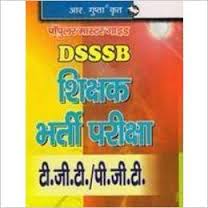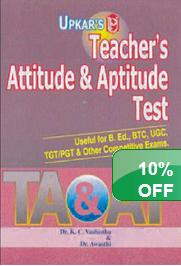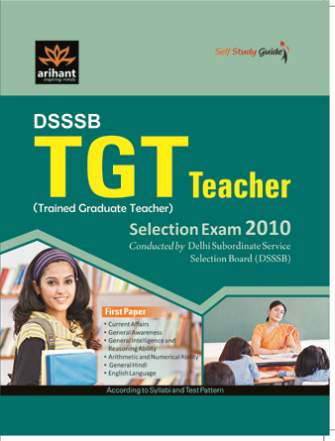As you want I am here suggesting you good books for TGT Social Science exam.
Reference books to be used : DSSSB Teachers TGT Social Science (Paperback) by RPH  TGT Social Science Syllabus:
TGT Social Science Syllabus:
HISTORY
● Contemporary World
a. Industrial Revolution
b. Economic Depression
c. Labour &Peasant class issues
d. Growth of industries in India in twentieth
e. Century
f. e. Features of colonial society in India
● French Revolution
g. Causes
h. Events
i. Impact
j. Consequences
● The Revolt of 1857
● Indian Freedom Struggle – 1885 to 1947
● Russian Revolution-1917, Causes, Events, Impact on Russia and the World, Consequences
● Rise of Socialism
• Philosophy of Karl Marx
• Socialism in Europe
• Impact of Socialism
● Rise of Fascist Forces in Germany & Italy
● The Two World Wars and the establishment of UN
GEOGRAPHY
Introduction to solar system; origin of earth,
Motions of the Earth: Rotation, Revolution, Occurrence of Day and Night; change of seasons; Latitudes and Longitudes; Finding time.
Earth’s Interior: Origin of continents and ocean basins Wegener’s Continental drift theory, Theory of Plate Tectonics, Earthquakes and Volcanoes, Folding and faulting
Rocks and minerals: Types of rocks; soil formation; major types and characteristics.
Agents of gradation: Weathering, mass wasting, running water, wind, glaciers, sea waves and Karsat topography
Climate:
Atmosphere – Composition and structure, elements of weather and climate
Insulation -Heat Budget, Heating and cooling of atmosphere, Conduction, Convection, Solar Radiation, Terrestrial raditiation, Advection, Temperature, Factors controlling temperature, distribution of temperature-horizontal and vertical
Pressure -Pressure belts, winds, cyclones and anti-cyclone,
Evaporation, condensation and precipitation and their forms: Humidity, rainfall and its types.
World climates- Classification, greenhouse effect, global worming and global climate change.
Water (Oceans): Distribution of water bodies on the Earth’s surface; hydrological cycle.
Ocean- Submarine relief, distribution of temperature and salinity; movement of ocean water’s-waves, tides currents of Atlantic, Pacific and Indian Ocean
Maps and Scales- Definition and classification
Finding directions, conventional signs
Techniques of representing relief features on map; contours, Hachures, Hill shading, layer tinting.
Representation of climatic data; line and Bar Graph, (Climograph) Isotherms, isobars and isohyets
Biosphere: Ecology, type of Eco-System, structure and functions of Eco-system-Food Chain, Food Web, World Biomes, Ecological Balance , Biodiversity and its conservation.
India (Size and Location)
Physical features of India
Geological Structure, Physiographic divisions, drainage system and its evolution.
Climate: origin and mechanism of Indian monsoon, Seasons of India, Classification of Climate of India (Coeppen’s) Soil: Types and distribution: Natural vegetation: types and distribution.
Population:
Growth and Distribution of population: Causes & Factors
Migration-Causes and consequences
Population theories & their relevance- Malthus, Demographic transition – theory
Population composition and its Attributes: Population and sustainable development; Population as a resource; Population problems and polices with reference to India.
Resources and Development
Meaning, nature and Components of resources and environment; Resources, environment and technology interface: classification of resources.
Distribution, utilization, economic and environmental significance and conservation of water, Minerals, Forests and fisheries; production and distribution of major crops, wild life resource and energy resources.
Agriculture
Wet and dry agriculture, Intensive, Extensive, shifting, commercial and plantation agricultural development and problems, crop intensity, major crops.
Manufacturing Industries
Classification, locational factors, types and distribution, industrial clusters of India, Production and distribution of sugar, Cotton Textile Iron and steel, chemicals and electronic industries.
Life lines of National Economy
Means of transportation and communication, Roads, Railways, waterways and airways, oil and gas pipelines, National electric grid, radio, television satellite and computers
International trade – Changing pattern of India’s foreign trade, sea ports and airports: Tourism as trade.
Understanding Disaster and Hazards.
Type of Disasters- Natural & Manmade.
1. Disaster Management : Becoming a Disaster manager. Components of Disaster management.
2. Disaster risk reduction: Disaster risk management. Understanding Disaster mitigation. Specific Hazards and mitigation.
3. Common manmade Disasters and their prevention
4. Community based Disaster Management and social planning for Disasters.
5. Tsunami: The killer sea waves.
6. Survival skills: During and After Disaster.
7. Alternative Communication system.
8. Safe construction Practices
9. Sharing Responsibilities
10. Planning Ahead
Components of production
People as Resource
• Economic activities/ non economic activities
• Population
• Education
• Health
• Unemployment/Employment
Poverty as a challenge
• Poverty line
• Poverty & inequality
• Policies for poverty reduction
• Poverty estimates
Food security in India
• Food security
• Green revolution
• Buffer stock
• Issue Price/Support price
• Role of co-operative societies in food security
Development
Growth/Development and structural development:
• Growth and distribution, sustainable agricultural growth
• Growth structural changes
• Population and human resource development
• Purchasing power parity (PPP)
• Main features of Indian Economy at the time of Independence
• Economic development
• Gross enrolment ratio
• Foreign trade & Economic development
• Development & under development
• Distribution of Income/factors of development
Sectors of the Economy
• Classification of Sectors like- Primary/Secondary/ Organized/unorganized/Public/Private sector
• Small and Large Industry
• Performance of the Public Sector
• Privatization
• Employment growth in the Industrial sector
Money & Credit
• Indian Monetary System
• Function of money
• Banks :
o Central Bank function
o Commercial Banks
• Self help Groups (SHGs)
• Debt trap
• Demand of money & supply of money
• Financial markets
• Money and capital market
• Monetary aggregates in India.
CIVICS
• Power sharing
• Federalism
• Democracy and Diversity
• Political parties
• Elections
• Challenges to Democracy
• Popular struggle and movements –like in Nepal, Bolivia
• Democracy
Concept
Salient Features
Local Self Government
Elections
Democracy in India & the World
• Indian Constitution
Framing of the constitution
Adoption of the constitution
Working of Institutions –Parliament ,
Judiciary
Fundamental Rights



